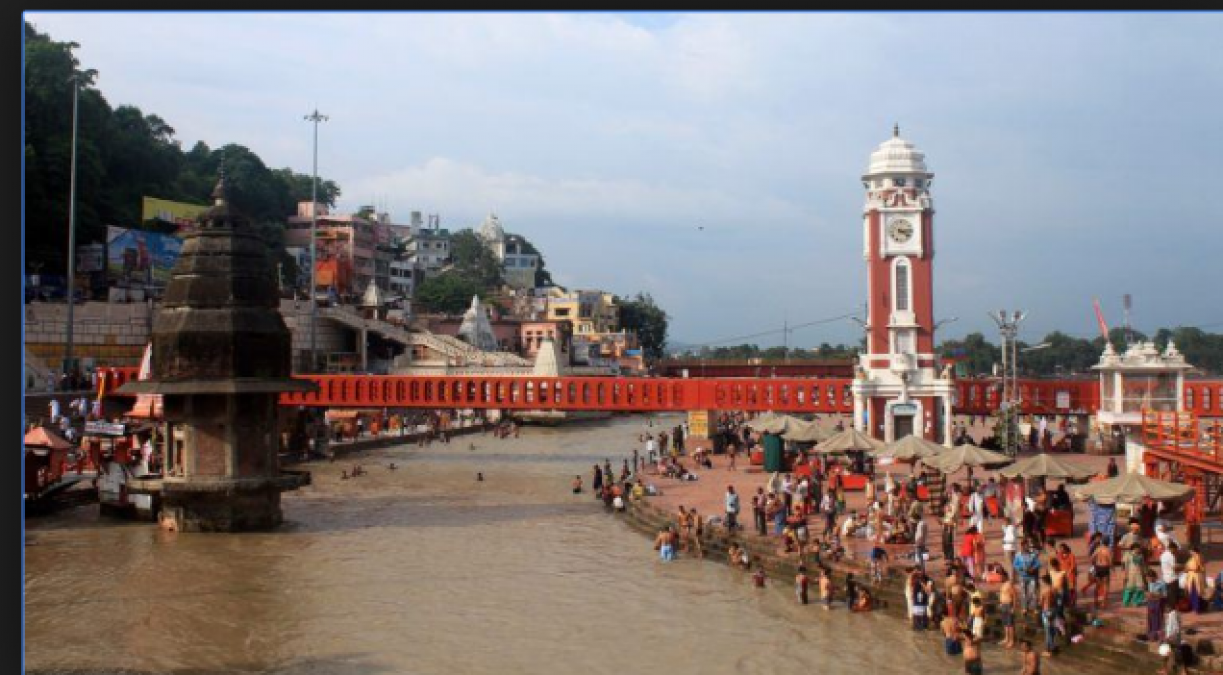
The River Ganges, running for more than 1500 miles across some of the most densely populated areas in Asia, is perhaps the most religiously significant body of water in the world. The river is considered to be sacred and spiritually pure, though it is also one of the most polluted rivers on earth. Originating from the Gangotri Glacier, high in the Himalayas of northern India, the river flows southeast through India, into Bangladesh, before spilling into the Bay of Bengal. It is the primary source of water—used for drinking, bathing, and irrigating crops—for more than 400 million people.
A Sacred Icon For Hindus, the River Ganges is sacred and revered, embodied by the goddess Ganga. Though iconography of the goddess varies, she is most often depicted as a beautiful woman with a white crown, riding the Makra (a creature with the head of a crocodile and the tail of a dolphin). She features either two or four arms, holding a variety of objects ranging from water lilies to a water pot to a rosary. As a nod to the goddess, the Ganges is often referred to as Ma Ganga, or Mother Ganga.
also read Know what today Love horoscope reveals to each zodiacs signs
Because of the purifying nature of the river, Hindus believe that any rituals performed at the banks of the Ganges or in its water will bring fortune and wash away impurity. The waters of the Ganges are called Gangaajal, meaning literally "water of the Ganges". The Puranas—ancient Hindu scriptures—say that the sight, the name, and the touch of the Ganges cleanses one of all sins and that taking a dip in the sacred river bestows heavenly blessings.
Mythological Origins of the River There are many renditions of the River Ganges’ mythical origins, owing in part to the oral tradition of India and Bangladesh. It is said that the river gave life to the people, and, in turn, people gave life to the river. The name of Ganga appears only twice in the Rig Veda, an early sacred Hindu text, and it was only later that Ganga assumed great importance as the goddess Ganga.
One myth, according to the Vishnu Purana, an ancient Hindu text, illustrates how the Lord Vishnu pierced a hole in the universe with his toe, allowing goddess Ganga to flow over his feet into heaven and down to earth as the waters of the Ganges. Because she came into contact with Vishnu’s feet, Ganga is also known as Vishnupadi, meaning a descent from Vishnu’s lotus feet. Another myth details how Ganga was intent on wreaking havoc on the earth with her descent as a raging river seeking revenge. In order to prevent the chaos, Lord Shiva caught Ganga in the tangles of his hair, releasing her in the streams that became the source for the River Ganges. Another version of this same story tells how it was Ganga herself who was persuaded to nurture the land and the people below the Himalayas, and she asked Lord Shiva to protect the land from the force of her fall by catching her in his hair. Though the myths and legends of the River Ganges are numerous, the same reverence and spiritual connection is shared among the populations that live along the banks of the river.
also read ‘Sarvarth Sidhayog Mangal’ occurs today will be drawn benefits to these zodiacs sign